Kjerstin Gruys's Blog, page 4
June 13, 2013
Watch Me on The Colbert Report... July 22nd!!
UPDATE: My interview on the The Colbert Report has been rescheduled for July 22nd, due to the passing of Stephen Colbert's mother last week.

I'm excited to report that the rumors are true:
I'm being interviewed on The Colbert Report... TONIGHT! CORRECTION: JULY 22nd.

"Facebook Official"
Please tune in at 11:30pm (10:30c) to witness America's most talented satirist poke fun of me for 5-7 minutes.... on July 22nd!
(I'm kinda nervous about this one, so wish me luck!)


I'm excited to report that the rumors are true:
I'm being interviewed on The Colbert Report... TONIGHT! CORRECTION: JULY 22nd.

"Facebook Official"
Please tune in at 11:30pm (10:30c) to witness America's most talented satirist poke fun of me for 5-7 minutes.... on July 22nd!
(I'm kinda nervous about this one, so wish me luck!)
Subscribe to Mirror, Mirror... OFF The Wall.

Published on June 13, 2013 00:30
Watch Me on The Colbert Report... TONIGHT!

I'm excited to report that the rumors are true:
I'm being interviewed on The Colbert Report... TONIGHT!

"Facebook Official"
Please tune in at 11:30pm (10:30c) to witness America's most talented satirist poke fun of me for 5-7 minutes.
(I'm kinda nervous about this one, so wish me luck!)
Subscribe to Mirror, Mirror... OFF The Wall.

Published on June 13, 2013 00:30
June 11, 2013
Reflecting on my Time Working at Abercrombie & Fitch Corporate...
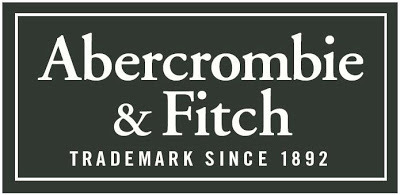
On May 30th I wrote an
article for Salon.com on the Abercrombie & Fitch clothing size controversy
("Is Abercombie & Fitch the enemy? Or is it
us?"). Thanks to all
of you who provided such great feedback.
As I mentioned in the
essay, I worked in the A&F corporate offices from 2004-2006. Several
of you asked if I could add to my Salon.com essay by sharing how my
experiences at A&F shaped my life. Here goes:
My fascination with the
politics of clothing size began during the time I worked at A&F as a
merchant in the outerwear division.
It was my first "real" job after college. I'd worked for a few years
as a sales associate at JCrew, and fancied myself a fashionista.
During my on-site job
interview I remember asking an HR representative to describe the
corporate culture at A&F, given it’s recent out-of-court settlement of
a lawsuit charging the company with widespread sexism and racism. “We’re an
incredibly inclusive organization,” he promised, “We’ve just hired a VP of
Diversity and all of our employees go through diversity training. Everyone is
welcome and respected at A&F.” The answer seemed okay to me, so I
happily accepted the job I was offered a few weeks later.
Looking back, I can see
that accepting a job at A&F was a last-ditch effort at trying to convince
myself I could be one of those "cool kids" Mike Jeffries referred to
in
his now famous 2006 interview with Salon. You know, the kind that have, as he put it, “a great
attitude and a lot of friends.” In contrast, I spent much of my time at
A&F depressed and often lonely, without many close friends, aside from
my beloved design counterpart and roommate. I was a recovering anorexic and
burgeoning feminist. I felt out of place and was occasionally scrutinized by my
director for being “too cerebral” (Cue Miranda Priestly in The Devil Wears
Prada, complaining about hiring the “smart fat girl.”)
Corporate employees were
expected to dress “on brand” at work. This meant dressing like our target young-adult customers. Imagine
heading to work wearing a low-cut tank top, torn denim mini-skirt and
flip-flops accessorized with leg-warmers (don't get all judgey... leg warmers
were hip back then!). During my employee orientation the HR rep joked that
wearing a GAP sweatshirt on campus would result in security being called. We
were also subtly discouraged from wearing the color black, deemed "too
urban" for the
"East-Coast-Rich-Kids-at-Summer-Camp-in-the-Adirondacks" aesthetic
A&F is known for. (If you doubt me on this, I challenge you to find a
single stitch of black thread in an A&F store!) It took me almost a year
after leaving A&F to feel comfortable reintroducing black into my wardrobe.

Speaking of summer camp in the Adirondacks...
THIS was what the corporate campus looked like!
My body was an A&F
size 8 back then, precariously maintained through carefully rationed low-calorie
frozen meals and religious gym attendance, including - of course - the “Abercrombie Abs” class at the gym on
campus. I wore the second-largest women’s size available at A&F, and
the largest available at Hollister & Co. It terrified me to think that
if I gained weight I’d have to join the ranks of larger women employees who had
sized out of the women’s sizes and wore ill-fitting A&F men’s t-shirts
and sweatshirts to work every day.
Admittedly, staying
"not fat" was never an official policy at A&F corporate, and
there were many women my size or larger working throughout the office,
including in leadership positions. Indeed, some larger women employees,
especially those on the creative side of the business, were savvy enough to
find Abercrombie-esque clothes that fit well and fit it. But I wasn't ready to
go there. Part of me - the anorexic part - liked having an excuse to stay
below those scary double digits.
Needless to say,
Abercrombie & Fitch and I weren’t a great fit (pun intended). After trying to make it work - of faking it - for a
year and a half, I had to face the fact that my fashionable, “cook kid,”
career path was making me miserable and keeping me unhealthy. I had to
make a choice between my vanity and my sanity, so I left the company in
summer of 2006, a few months after my first promotion. My next job was, again,
in the fashion world, at Gap Inc., and I was happy there. But my experience at
A&F had left a bad taste in my mouth, one that made me miss the intellectual
adventures I'd enjoyed while earning my undergraduate degrees in sociology and
gender studies. Grad school was calling to me, and I'm so glad I
heeded the call.
Academia isn't
perfect, but I love my work and the community of scholars and social activists
that support me in it, as friends and colleagues. Oh, and last time I
checked, my graduation regalia will include a forgiving one-size-fits all gown
in - what else? - black.
PS - I think most of us
learned a thing or two about ourselves (and life in general) at our first
"real" jobs. I'd love to hear your stories!
Subscribe to Mirror, Mirror... OFF The Wall.

Published on June 11, 2013 06:00
June 10, 2013
Is Abercrombie & Fitch the Enemy? Or is it Us? A Call for an End to Vanity-Sizing.

(The following post is excerpted from my lead article in Salon.com from 5/30/13.)
Over the past several weeks, clothing retailer Abercrombie & Fitch has been denounced in the media for not stocking women’s clothing in sizes greater than “large” while offering XL and XXL sizes to male customers.
“Abercrombie & Fitch CEO Hates Fat Chicks” read one headline. Another refers to “Abercrombie & Fitch CEO’s ugly quest for attractive ‘cool kids.’ and criticizes A&F for ignoring a purported ”revolution” of size inclusiveness in teen fashion led by H&M and American Eagle Outfitters. The backlash was further fueled last Friday by A&F CEO Mike Jeffries’ defensive response and non-apology for offensive remarks he made in a Salon story in 2006. In response, customers and body image activists are boycotting stores and waging viral grass-roots campaigns in protest.
As a sociologist studying the harmful effects of our culture’s narrow beauty ideals, it’s gratifying to see a public outcry in defense of “large women.” As a former employee at Abercrombie & Fitch’s corporate headquarters, I’m frankly surprised it took seven years for journalists to link Jeffries’ statements about marketing only to “cool and popular kids” to the company’s somewhat limited range of clothing size.
My fascination with the politics of clothing size began in 2004 when I worked at A&F corporate as a merchant in their outerwear division. Employees were expected to dress “on brand” at work, which meant always wearing A&F clothes from the current season. I squeezed myself into the second-largest A&F women’s size available — an 8 — and dieted to stay that size. It terrified me to know that if I gained weight and sized out of their women’s clothes, I’d have to wear ill-fitting men’s T-shirts and sweatshirts to work every day, as I’d seen other “large” women do.
I am eagerly in support of any fashion revolution leading to more inclusive sizing and the lessening of fat prejudice, but I’m skeptical as to whether the current A&F backlash will bring about any meaningful change. Elitist CEOs are certainly part of the problem, but if we truly want ready-to-wear clothing retailers to embrace larger bodies we need to first address our own internalized prejudice against fat.
What we should be demanding from our clothing retailers, alongside our cry for more inclusive sizing, is transparent sizing that is standardized across brands. In short, it’s time to demand an end to vanity sizing.
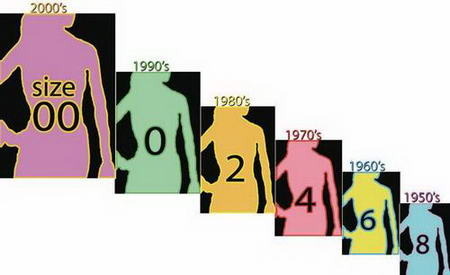
“Vanity sizing” (sometimes called “size inflation”) refers to the common practice of ready-to-wear fashion retailers who lower the nominal (labeled) size of their garments without changing the actual measurements. Thus, this year’s size 8 may fit like last year’s size 10. Consumers presume (and retailers often affirm) that this is done to appease female customers’ size-conscious egos.
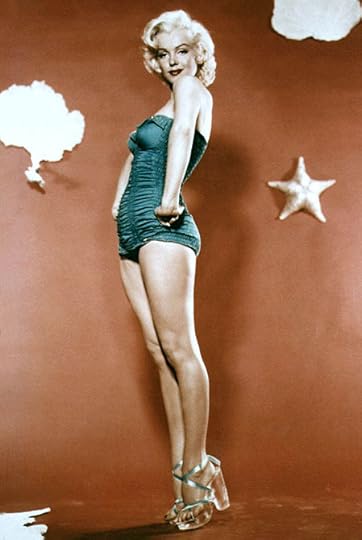
Size 12-14... in the 1950s!
Over time the sizing standards have changed fairly dramatically. For example, in my research I’ve found that the smallest women’s clothing size offered by Sears in 1930 was a size 15 with a bust measurement of 31 inches. By 2009 the smallest women’s size Sears offered was a 3 even though the bust measurement had increased to 32.5 inches. For a more visual perspective Marilyn Monroe – a size 12-14 back in the day – would today wear size “XS” jeans from A&F, thanks to her diminutive 22-inch waist.
It’s true that vanity sizing gives many of us an artificial (and superficial) self-esteem boost. Indeed, a 2011 study published in the Journal of Consumer Psychology found that vanity sizing improved people’s body image. But this boost to self-image is rooted in the belief that larger body size is bad and undesirable. In this way, vanity sizing reinforces persistent size prejudice, not to mention the sexist double-standard associating slenderness with femininity, and brawny mass with masculinity.
Given our emotional attachment to vanity sizing, our critique of A&F is both ironic and ill-conceived. If so many of us agree – nay, beg – to have fashion retailers lie to us when it comes to our own clothing size, why are we so horrified and furious to learn that retailers are just as fat-phobic as we are? We can’t have it both ways, not if we desire real change.
So if we look at measurements rather than labels, how does A&F sizing really measure up?
* According to data collected 2007-2010 by the CDC, the average waist measurement of a 19-year-old woman is 33.6 inches. The largest women’s size at A&F is a “Large” or “12” (not a 10, as has been incorrectly claimed pretty much everywhere). The waist measurement of this size is 31 inches. In other words, the average 19-year-old girl is too fat to shop at A&F.
* The average waist measurement of a 19-year-old male is 33.8 inches. The waist measurement of “XL” or “36” pants at A&F (it turns out XXL is only offered for shirts) is 36 inches. So, yes, the average 19-year-old guy can find clothes that fit at A&F. Yet, a 19-year-old with a 36-inch-waist is in the 75th percentile for his age, meaning that 25 percent of men are larger, and too fat to shop at A&F. Better? Yes, but not jaw-droppingly so.
And how about the stores credited for launching a sizing revolution?
* As reported elsewhere, American Eagle is much more inclusive than A&F in their women’s sizing, with the maximum size (XXL/18) coming in at 36.5 inches. Men’s sizing is similarly broad, offering up to 38” in stores, with up to 46” available online.
* H&M, however, compares a bit less favorably. Although H&M offers women’s shirts up to size 3XL (48.75” bust measurement), women’s jeans are only offered up to size 16, measuring at 34.” This is juuuust higher than the average 19-year-old girls’ waist size, leaving 50 percent of them again “too big” to wear H&M. This doesn’t seem so revolutionary to me.
More fascinating is what we see in H&M men’s sizing: the largest size available is “XL/40R” which has a measurement of 38”. Read that again. See that? The actual waist measurement of H&M pants is a full two inches less the labeled size. In other words, H&M is “vanity sizing” to its male customers, leading them to believe they’re bigger than the listed size. Double-standard much?
If we want the fashion landscape to be less discriminatory toward larger women (and men!), it’s time that we demand size standards based on measurements, not market research. Forgive my Dove Campaign For Real Beauty puns, but it’s time we admit that real women have real measurements. Let’s get acquainted with our measurements and stop knowingly catering to our prejudicial insecurities.
The good news is that there’s evidence suggesting we’re ready. As witness in the current Abercrombie & Fitch backlash, snobbish elitism isn’t quite as cool as it used to be. Neither is hating our bodies. A recent survey of over 24,000 people found that the majority of women (58 percent) are satisfied with their overall physical appearance. Only 23 percent of women are dieting in 2012 compared to 35 percent in 1992. In 1985, the majority of Americans surveyed (55%) agreed that being thin was a lot more attractive than being heavy. Today fewer than 25 percent agree. Even “fat talk” is becoming eye-rollingly passé.
So what’s it going to be? Your vanity or your values?
Subscribe to Mirror, Mirror... OFF The Wall.

Published on June 10, 2013 19:29
May 30, 2013
What's Up With All of the Recent "Size 8" Pride? (And What, Exactly,IS "Size 8," Anyway?)
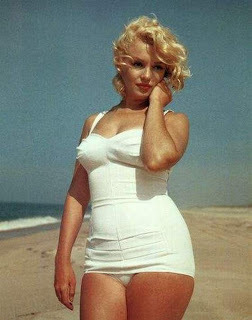
Size 14? Well, yes, but no. Read more here.
In the spirit of "Throwback Thursdays" and my Salon.com essay about the Abercrombie & Fitch controversy, I'm bringing back this oldie-but-goodie post.
Enjoy!
The other day I was editing an article I'm writing for the academic journal, Social Problems. (The article draws from my master's paper, about the "Plus Size" clothing industry.) It was my second round of responding to reviewers' edits, so most of the requested changes were pretty minor. One, however, gave me pause.
Reviewer #2 wrote: "Inconsistency: Sometimes the author says she is a size 8 and other times a size 10."
Inconsistent? Sure. But it's also true. When I wrote that I "generally wear a standard-sized 8 or 10 in pants," I meant it. Some days I'm an "8" and other days I'm a "10." But to be completely honest, depending on where I've been shopping for clothes, I might also be a "6," a "12," a "Small," a "Medium," a "Large," or an "XL." My closet currently contains clothes in all of these sizes, and they all fit. Sure, my measurements fluctuate a bit depending on my hormones and/or the length of time that's passed since I last ate a super-salty meal (yummmm), but I know my body, and it doesn't change all that much.
It's not me, it's them.
Who? Them.
The clothing companies who can't seem to make up their minds about what size(s) we are.
The crazy inconsistency of clothing size standards in the U.S. fashion industry fascinates me. It fascinates me so much, in fact, that I've conducted research on the topic. I'll tell you more about the particulars of my sociological stuff some other time, but suffice it to say that I kind of scoff whenever I hear anyone - particularly celebrities - claiming to be any certain size.
 The stand-out offender, to my memory, was Jennifer Love Hewitt, who responded to trash magazines that had dissed her for gaining weight by saying on her blog, "Like all women out there should, I love my body. [...] A size 2 is not fat! Nor will it ever be." It really pissed me off that Jennifer used a completely nebulous concept ("size 2") to tell the world that she wasn't fat, and, therefore, shouldn't be picked on. For the record, this was pure "fat talk," and while it may have seemingly gotten supposedly-size-2-Hewitt off the hook, it also reinforced the idea that it's okay to be cruel to women who are fat. Folks called Hewitt a body image advocate for sticking up for herself, but I wish she'd stuck up for the rest of us too. Nobody - not even very very fat women - deserve to be treated with disrespect. (Oh, on a side note, mark my words: if vanity sizing continues the way it's been going, size 2 may very well be considered "fat" in a future filled with size quadruple-zeros!)
The stand-out offender, to my memory, was Jennifer Love Hewitt, who responded to trash magazines that had dissed her for gaining weight by saying on her blog, "Like all women out there should, I love my body. [...] A size 2 is not fat! Nor will it ever be." It really pissed me off that Jennifer used a completely nebulous concept ("size 2") to tell the world that she wasn't fat, and, therefore, shouldn't be picked on. For the record, this was pure "fat talk," and while it may have seemingly gotten supposedly-size-2-Hewitt off the hook, it also reinforced the idea that it's okay to be cruel to women who are fat. Folks called Hewitt a body image advocate for sticking up for herself, but I wish she'd stuck up for the rest of us too. Nobody - not even very very fat women - deserve to be treated with disrespect. (Oh, on a side note, mark my words: if vanity sizing continues the way it's been going, size 2 may very well be considered "fat" in a future filled with size quadruple-zeros!)Anyway, back to the present. These days, "Size 8" seems to be the new cool-girl size. Female celebrities owning their down-to-earthiness are all about the Size 8! (This all kind of reminds me of the whole "Real Beauty" thing from a few years ago, which sounds nice, but also suggests that certain women are somehow more real than others.) Anyway, this recent SIZE 8 IS GREAT! trend started with my favorite funny-girl, Mindy Kaling.

Here is what Mindy writes about being a "chubby 8" in here book Is Everybody Hanging Out Without Me?:
Since I am not model-skinny, but also not super-fat and fabulously owning my hugeness, I fall into that nebulous, 'Normal American Woman Size' that legions of fashion stylists detest. For the record, I'm a size 8 (this week anyway). Many stylists hate that size because, I think, to them, I lack the self-discipline to be an aesthetic, or the sassy confidence to be a total fatty hedonist. They're like 'Pick a lane.'"
I like that Mindy suggests that her body changes by the week, but what about her clothing size? A size 8? From where, exactly? I'm not suggesting that Mindy is actually bigger than a size 8, or smaller, or whatever. In my opinion a woman's actual size and clothing size shouldn't matter at all. But they do, so why claim something that we all know to be... well... "nebulous." Are we all agreeing to ignore this so we can tell ourselves that WE are, in fact, size whatever-we-want-to-be? (FYI, I find it really interesting that she thinks stylists prefer either super thin or super fat. In my experiences working in the fashion industry, "super fat" was what they called... me. So maybe times have changed?)
Next there was Miranda Lambert.
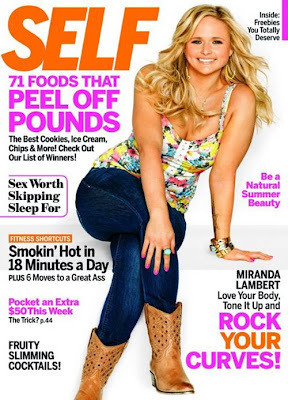
Lambert told everyone who reads SELF magazine, "I feel my best when I'm a toned, not flabby, size 8." Again, size 8 is the chosen size. But, don't worry, she's not flabby. Indeed, Miranda's as-long-as-I'm-not-flabby body confidence appears on the magazine cover next to a headline promising to "Peel Off the Pounds!" Sigh.
Finally, formerly-skinny-sized-now-formerly-plus-sized-model Crystal Renn added her two-cents.

Renn fended off critics of her recent weight loss by saying,
I've been a double-zero, children's clothes, at 95 pounds, and I've been all the way up to a size 16 and everything in between. [....] Now I'm a 6, 8, sometimes a 10, depending on what designer I'm wearing. And that's an interesting place to be in fashion, where extremes are the norm.
Renn's quote is actually my favorite of the three. Why? Because it (finally!) recognizes that clothing size labels are all over the place. I have no idea what's going on with Renn's weight-loss-gain-loss (and it's really none of my business), but I do believe what she's decided to tell the world about her clothing size: it totally depends on what designer she's wearing.
Since clothing size varies tremendously across brands, celebrities (and real people!) can claim to be any variety of sizes without lying. For example, I could describe myself as an "XS" since I have one t-shirt in my closet that fits. Or, I could describe myself as "XL" thanks to another t-shirt that fits. (It's magic, I tell ya!) Anyway, my point is this: why are celebs suddenly claiming "Size 8" instead of something smaller (or larger, for that matter)?
If Mindy and Crystal are to be trusted, this "in-between" size isn't very appreciated by "the industry." My opinion? I think that claiming to be a "size 8" is intended to give us the impression that the celebrity is not so skinny that we can't relate to her, but also not so fat that we cringe on her behalf, or no longer aspire to be her.
But I'm not sure how I feel about this.
On the one hand, I don't think a woman's body size or clothing size or weight or does-she-did-or-doesn't-she enhance her appearance through surgery or hair dye should matter a fig to anyone. All of these things ought to be simple matters of biology and/or personal expression, NOT determinants of whether a woman ought to be respected or admired or loved.
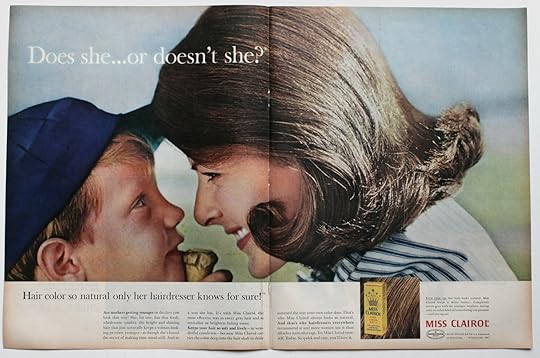
On the other hand, since the above situation seems unlikely in the foreseeable future, my second-preference would be for female celebrities - and the rest of us! - to be completely upfront and open about their bodies. For example, my mother-in-law, Sherry, has had quite a few cosmetic procedures and has a policy of complete disclosure. I respect this a lot. Instead of us all obsessing about "does she or doesn't she," I'd like women to simply say, "yup, I dye my hair," or "yup, I got an eye-lift," or "yup, I pay an enormous amount of money for a personal chef and personal trainer," or "yup, I had weight-loss surgery," or "nope, I eat like crap and I'm probably going to kick the bucket early, but I've got crazy good genes for looks!" Even more basic, I'd like women to say, "yup, I'm 5'5" and today I weigh 157 pounds," (that's me, by the way). I can't help but wonder if sharing more objective information about our bodies might help us cut through some of the little fibs we tell each other - and ourselves - about what makes a someone "normal" "ideal" or even "real."
Of course, we don't yet live in a world that allows women to say these things while also controlling how people react to them. Because of this, I'd never ask anyone - celebrity or not - to "come out of the closet" about this stuff. I just wonder whether pushing ourselves into a culture of "full disclosure" (i.e., talking about our measurements instead of our clothing size) might help us get closer to a place where the mystery of these things have less power over our lives.
But what do YOU think? Is it nice or just sneaky when celebs talk about their clothing size? Is it none of our business, or are you frustrated when celebrities keep their beauty secrets secret? Finally, are you attached to being, or fitting into, a particular clothing size?
Subscribe to Mirror, Mirror... OFF The Wall.

Published on May 30, 2013 06:00
May 15, 2013
Groupon is Medicalizing Beauty... and it's NOT "Good for Your Health"
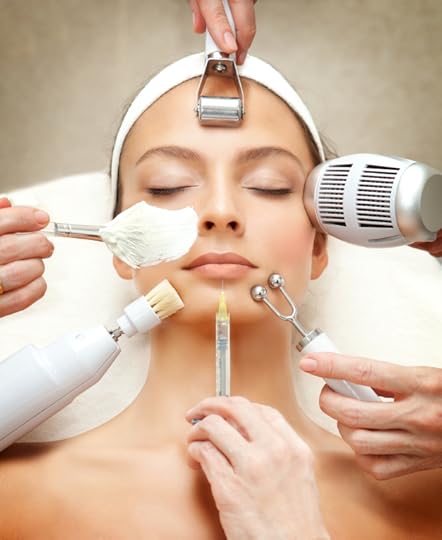
On Monday morning I awoke to the usual smattering of 50+ new emails in my inbox. I weeded through a handful of "I love your book!" and "You're so fat and ugly and stupid I can't believe anyone let you out of your cage to write a book!" messages. (I'll discuss creepy jerks another day. For now, just know that I was not "let out" but escaped from my cage and it's been grande!) I soon came across an email from Groupon.com, titled "These Deals are Good for Your Health."

Screenshot of THE email.
I've been a Groupon customer for years. I LOVE getting a great deal on the variety of services and products I consume. Thanks to Groupon, I've tried numerous new restaurants, snagged a few indulgent mani-pedis, spent a romantic weekend in wine country, and had my car immaculately detailed in an urgent post-puppy-puke situation. I usually love these folks. So when I saw the heading "These Deals are Good for Your Health" I was psyched. Bargains! Health! Yay!
I opened the email ready to pounce on discounted dental cleanings, yummy yoga class passes, chub-rub-resistant workout gear, some therapeutic (aka, relaxing) massage, a new ergonomic keyboard, or maybe the latest 28-inch NASA-patented skittles-filled mattress pad. Instead I was offered the following deals, for my "health":
75% off of Laser Hair Removal
58% off of Brazillian Waxes
70% off of Microdermabrasion
56% off Laser Lipo Treatments
55% off Phytobiodermie Cellulite Reduction
69% off Fractional Laser Treatments
To be precise, the "Good for Your Health" promotion email contained all six of the above and two vague offers for discounted "Spa Services," (one turned out to be a fairly benign mani-ped + massage and the other offered a "deluxe oxygen facial" + "microdermabrasion; infrared sauna; herb enriched detoxifying wrap"). But that's it. No yoga passes, no dental cleanings, and the "herb enriched detoxifying wrap" didn't even include medical marijuana! (j/k. Grandmas Ruth and Rita, I would NEVER!) Instead it was just a bunch of beauty "treatments" in disguise.
That Groupon email was one of the finest most blatant examples of "medicalization" I'd seen in a while. In sociology-speak (quoting from this EverydaySociologyBlog essay), the term medicalization
"refers to the practice of redefining a behavior, concern, or practice as a problem to be 'solved' by doctors"
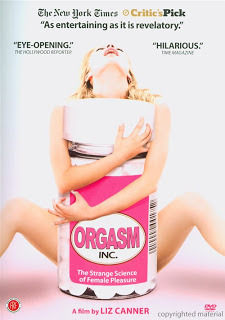
Sociologists study the medicalization of all sorts of things, including childbirthing/delivery, misbehavior/ADHD, fatnes s/obesity, and sexual "dysfunction". (My all-time favorite example of medicalization is "hysteria," a catch-all diagnosis that Victorian era physicians treated through "fine gentle massage"... of the lady parts!) Medicalization isn't inherently bad. I, for one, I'm grateful that a lot of mental health issues are now therapy + doctor things instead of "bad mood" or "just eat" things. But "There's a lot of money to be made from telling healthy people they're sick." I love it when companies solve my problems, but not so happy when they invent them!
So I'm pissed off at Groupon. It's bad enough that these primarily aesthetic "treatments" are described as "Good for Your Health" despite the fact that none of the body bits (pubic hair, wrinkles, cellulite) pose any legitimate health risk in their natural state. But, to make matters worse, almost all of these "services" involve physical pain and/or impose health risks due to the treatment itself. Not such a great deal after all...
Now, I enjoy my own beauty routines as much as the next gal. I reward my "writing fingers" with weekly manicures, wear some makeup most days, and even had a brazilian or two back when I was still trying to impress my husband. I'm not angry at women who want to be beautiful. I get it. I want to be beautiful too. However, I am angry at bullshit beauty advertising. Hate the game, not the players, ya'll.
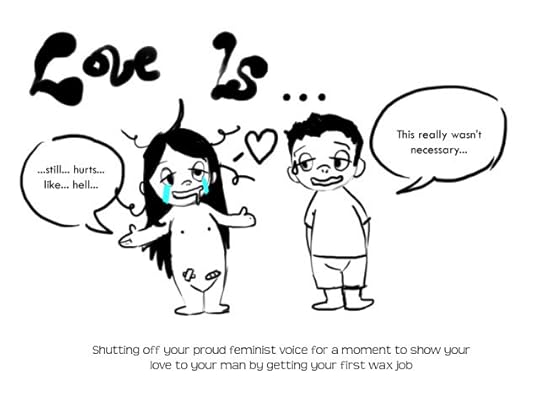
This cartoon = me + Michael when we first started dating. Ha!
Women deserve a world in which we are free to express individuality and authenticity through appearance, allowing us the pleasurable creativity of self-expression. In this world we would not be so harshly judged for our beauty or our beauty-related choices. We obviously aren't there yet (hence, the "you're too 'fat-n-fugly' to be allowed to speak" emails I've been getting), but in the meantime I'd really appreciate it if Groupon would stop trying to convince us that tearing out our public hair at the root is "good for our health."
Enough of my rant. What do YOU think?
Do any of your beauty routines make you healthier?
Have any of them caused pain or - egads - a trip to the ER? I'll show you mine if you show me yours!
Subscribe to Mirror, Mirror... OFF The Wall.

Published on May 15, 2013 05:30
May 6, 2013
How To Celebrate International No Diet Day! (And How NOT To)
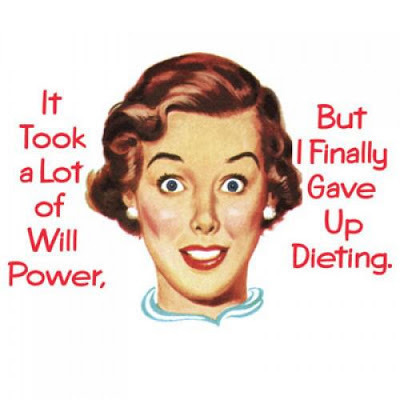
It's International No Diet Day! Hurrah! This is something I try to celebrate EVERY day of the year, but on May 6th I get to really fly my foodie freak flag. You might be wondering exactly what INDD is about. Well, it obviously isn't about dieting, but it also isn't about scarfing down junk food in a binging free-for-all. Binging is NOT the opposite of dieting.
Guiltily binging on "bad" food is 1/2 of the yo-yo dieting cycle.
It's bad for you, and isn't anti-dieting. So don't do that today. :)
Instead, do this: Imagine what your life would be like if you spent as much time, money, and emotional energy on your relationships, career, and/or favorite hobbies as you do on diets. Would your life be drastically different? Would the world be drastically different if this happened on a grand scale? I think so.
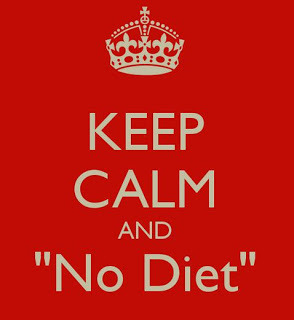 If you're uncomfortable with your answer to this question, I encourage you to talk with your friends, family, or even see your doctor or therapist, if you need to. Do some research on intuitive eating and mindful eating. Enjoy my favorite (chocolicious!) mindful eating exercise,
Seven Steps to Mindful Eating
. Finally, remind yourself of what "normal eating" looks and feels like. I've written on this topic in the past, and I'm copying my favorite "definition of normal eating," below. This is the definition I was given while in treatment for my eating disorder; once this definition "clicked" for me, I finally believed that I could recover (and I did!).
If you're uncomfortable with your answer to this question, I encourage you to talk with your friends, family, or even see your doctor or therapist, if you need to. Do some research on intuitive eating and mindful eating. Enjoy my favorite (chocolicious!) mindful eating exercise,
Seven Steps to Mindful Eating
. Finally, remind yourself of what "normal eating" looks and feels like. I've written on this topic in the past, and I'm copying my favorite "definition of normal eating," below. This is the definition I was given while in treatment for my eating disorder; once this definition "clicked" for me, I finally believed that I could recover (and I did!).
What is Normal Eating? by Ellyn Satter
Normal eating is going to the table hungry and eating until you are satisfied.
It is being able to choose food you like and eat it and truly get enough of it -not just stop eating because you think you should.
Normal eating is being able to give some thought to your food selection so you get nutritious food, but not being so wary and restrictive that you miss out on enjoyable food.
Normal eating is giving yourself permission to eat sometimes because you are happy, sad or bored, or just because it feels good.
Normal eating is mostly three meals a day, or four or five, or it can be choosing to munch along the way.
It is leaving some cookies on the plate because you know you can have some again tomorrow, or it is eating more now because they taste so wonderful.
Normal eating is overeating at times, feeling stuffed and uncomfortable.
And it can be undereating at times and wishing you had more.
Normal eating is trusting your body to make up for your mistakes in eating.
Normal eating takes up some of your time and attention, but keeps its place as only one important area of your life.
In short, normal eating is flexible. It varies in response to your hunger, your schedule, your proximity to food and your feelings.
Here is how I want you to celebrate International No Diet Day:
Finally do something you've been putting off "until you lose weight!"
Need ideas?
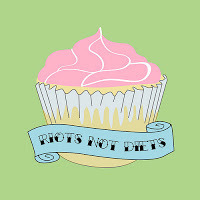
Buy a bikini! WEAR a bikini! Go to the gym! Wink at that cutie from the coffee shop! Spend a shit-ton of money on clothes that fit you RIGHT NOW! Have sex with the lights on!
Most importantly: LOVE YOURSELF! :)
Q: Have YOU ever put off something because you wanted to lose weight? What did you put off? (FYI - I'm guilty of all of the above, but not anymore!)
Subscribe to Mirror, Mirror... OFF The Wall.

Published on May 06, 2013 01:21
Celebrating International No Diet Day!

It's International No Diet Day! Hurrah! This is something I try to celebrate EVERY day of the year, but on May 6th I get to really fly my foodie freak flag.
You might be wondering exactly what INDD is about. Well, it obviously isn't about dieting, but it also isn't about scarfing down junk food in a binging free-for-all. Binging is NOT the opposite of dieting. In fact, binging is an integral part of the yo-yo dieting cycle.
Here's are some important questions to ask yourself today: do your eating habits include foods and meals that are neither "dieting" nor "bingeing"? In other words, is every single act of nom-noming either "good" or "bad" but never neutral, never pleasurable without causing guilt? Do you limit certain types of foods, or categories of nutrients (i.e., low-carb, low-fat, low-whateva)? Imagine what your life would be like if you spent as much time, money, and emotional energy on your relationships, career, and/or favorite hobbies as you do on diets. Would your life be drastically different? Would the world be drastically different if this happened on a grand scale? I think so.
 If you're uncomfortable with you answers to these questions, I encourage you to talk with your friends, family, or even your doctor or therapist, if you need to. Do some research on
intuitive eating
and
mindful eating
. Enjoy my favorite (chocolicious!) mindful eating exercise,
Seven Steps to Mindful Eating
. Finally, remind yourself of what "normal eating" looks and feels like. I've written on this topic in the past, and I'm copying my favorite "definition of normal eating," below. This is the definition I was given while in treatment for my eating disorder; once this definition "clicked" for me, I finally believed that I could recover (and I did!).
If you're uncomfortable with you answers to these questions, I encourage you to talk with your friends, family, or even your doctor or therapist, if you need to. Do some research on
intuitive eating
and
mindful eating
. Enjoy my favorite (chocolicious!) mindful eating exercise,
Seven Steps to Mindful Eating
. Finally, remind yourself of what "normal eating" looks and feels like. I've written on this topic in the past, and I'm copying my favorite "definition of normal eating," below. This is the definition I was given while in treatment for my eating disorder; once this definition "clicked" for me, I finally believed that I could recover (and I did!).
What is Normal Eating? by Ellyn Satter
Normal eating is going to the table hungry and eating until you are satisfied.
It is being able to choose food you like and eat it and truly get enough of it -not just stop eating because you think you should.
Normal eating is being able to give some thought to your food selection so you get nutritious food, but not being so wary and restrictive that you miss out on enjoyable food.
Normal eating is giving yourself permission to eat sometimes because you are happy, sad or bored, or just because it feels good.
Normal eating is mostly three meals a day, or four or five, or it can be choosing to munch along the way.
It is leaving some cookies on the plate because you know you can have some again tomorrow, or it is eating more now because they taste so wonderful.
Normal eating is overeating at times, feeling stuffed and uncomfortable.
And it can be undereating at times and wishing you had more.
Normal eating is trusting your body to make up for your mistakes in eating.
Normal eating takes up some of your time and attention, but keeps its place as only one important area of your life.
In short, normal eating is flexible. It varies in response to your hunger, your schedule, your proximity to food and your feelings.
Here is how I want you to celebrate International No Diet Day:
Finally do something you've been putting off "until you lose weight!"
Need ideas?

Buy a bikini! WEAR a bikini! Go to the gym! Wink at that cutie from the coffee shop! Spend a shit-ton of money on clothes that fit you RIGHT NOW! Have sex with the lights on!
Most importantly: LOVE YOURSELF! :)
Q: Have YOU ever put off something because you wanted to lose weight? What did you put off? (FYI - I'm guilty of all of the above, but not anymore!)
Subscribe to Mirror, Mirror... OFF The Wall.

Published on May 06, 2013 01:21
May 2, 2013
About-Face(ing) New York, New York!

That's me, Audra Lowe and JD Roberto, on the set of The Better Show.
Hi everyone, I'm writing this what-I'm-up-to post as I sit in a lovely hotel room in New York City! My book, Mirror, Mirror Off the Wall, came out TODAY, and it's been a flurry of excitement and fun. I had several interviews today, so I wore my favorite color, green, for good luck and confidence. So far, so good, and I have ONE more interview left tonight: GOOD MORNING AMERICA! (Woooeeee!) Assuming all goes as planned, you can watch the GMA piece during the 8am hour, tomorrow (Friday) morning! I'll be the one in green.
In other news, Mirror, Mirror Off the Wall just jumped from an Amazon.com best-sellers ranking of #475,581 before the book came out, all the way up to #85,915 today! This cracks me up and is quite motivating: I want to be in the top #50,000 tomorrow! And so the journey continues...
Speaking of journeys, I NEVER make a journey out of California (or out of my house, for that matter) unless I have a set of About-Face #MindOverFashion stickers with me. What are these stickers, you ask? Well... they're basically my favorite way to slap an "I'm calling out your sexist media bullshit" message onto any media image that might teach girls to hate their perfectly wonderful bodies.
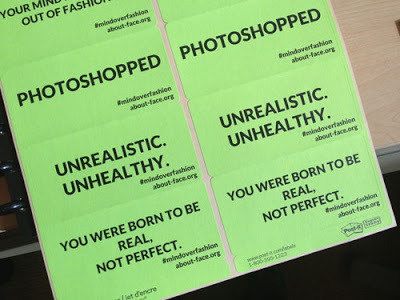
If you're not yet familiar with About-Face, you should know that it's an amazing nonprofit organization that helps girls develop tools for understanding and challenging media messages that threaten their self-esteem and body image. I'm a longtime volunteer, serving both as a media literacy workshop leader and an evaluation consultant. 5% of my book proceeds will be donated to About-Face (So, seriously, buy the book!). Just over a month ago, one of About-Face's amazing teen "action groups" spent an afternoon "Sticker-Bombing" San Francisco's Union Square, with awesome messages like "You were born to be real, not perfect!" and "Your mind will never go out of fashion!" I found it so inspiring and empowering that I began bringing these stickers along with me wherever I go, just in case.

Last night, when I finally arrived at my hotel room after a long day of travel, THIS is what I found waiting for me in a magazine. In case you couldn't tell.... it's an advertisement for.... LUGGAGE. Yeah, luggage. That really makes me want to go buy some luggage... NOT! Anyhoo, I think it looks better - and I feel better - now that it's been anointed with a pink sticker.
What do you think?
What ads would you want to About-Face sticker-bomb??
Subscribe to Mirror, Mirror... OFF The Wall.

Published on May 02, 2013 16:57
May 1, 2013
Mirror Mirror Off the Wall Hits Bookshelves TOMORROW!
I can't believe it's almost May 2nd.
Mirror, Mirror Off the Wall: How I learned to Love My Body by Not Looking at It for a Year
hit's bookshelves THIS WEEK! You can find it on Amazon, Barnes & Noble, Books A Million, Indiebound, iTunes, and wherever books are sold.
I have a few more announcements to come (hint: I'm packing up for a trip to NYC right now), but in the meantime please enjoy my just-released book trailer.
I don't ask this very often, but THIS WEEK - like, right now, before you forget! - is a great time for YOU to help spread the word about my work and the book. Sooo.....
Please share this trailer with your social network.
Here's the link: http://vimeo.com/65209624

I have a few more announcements to come (hint: I'm packing up for a trip to NYC right now), but in the meantime please enjoy my just-released book trailer.
I don't ask this very often, but THIS WEEK - like, right now, before you forget! - is a great time for YOU to help spread the word about my work and the book. Sooo.....
Please share this trailer with your social network.
Here's the link: http://vimeo.com/65209624
Subscribe to Mirror, Mirror... OFF The Wall.

Published on May 01, 2013 09:10



